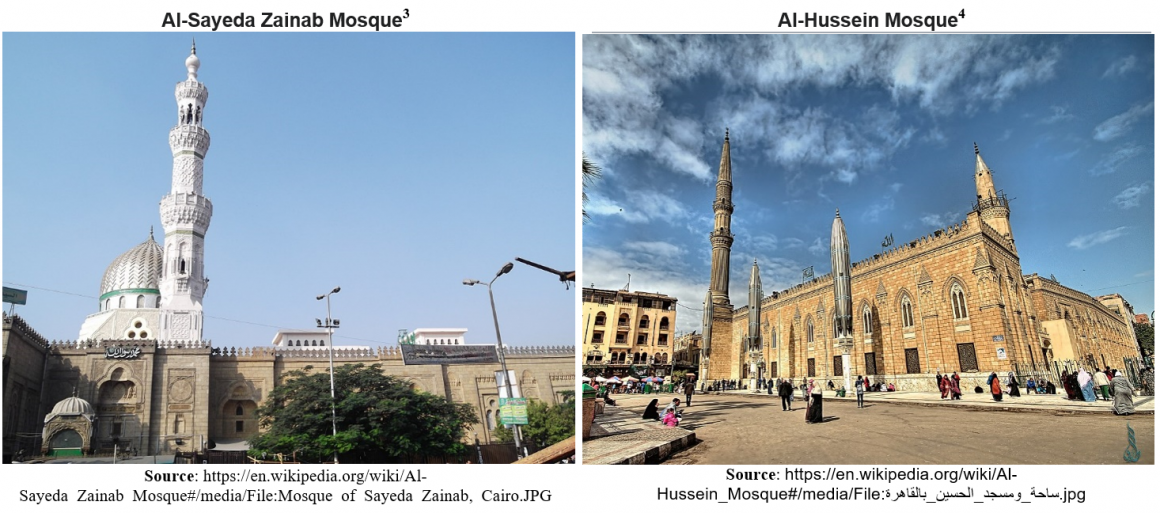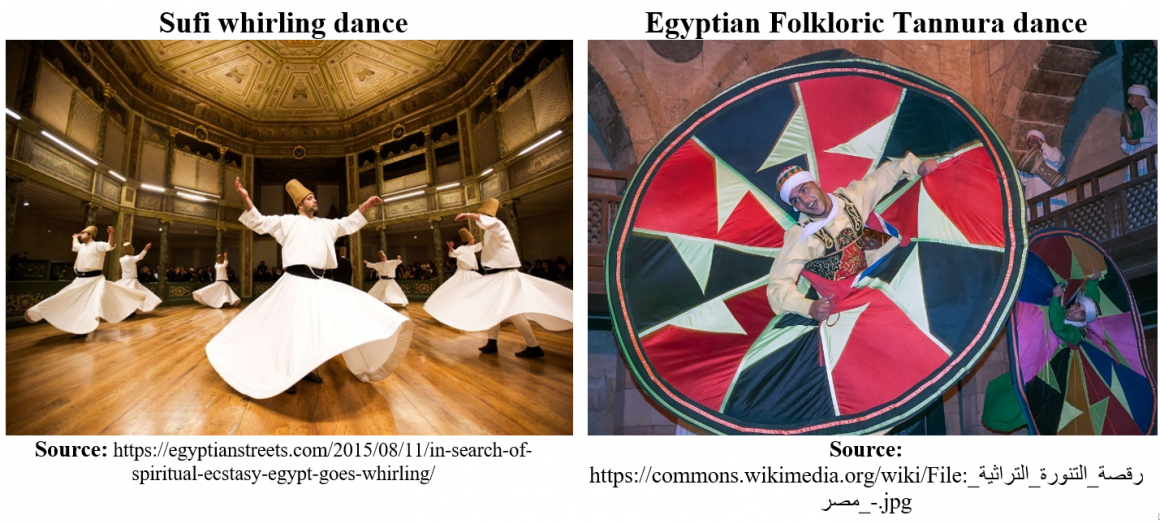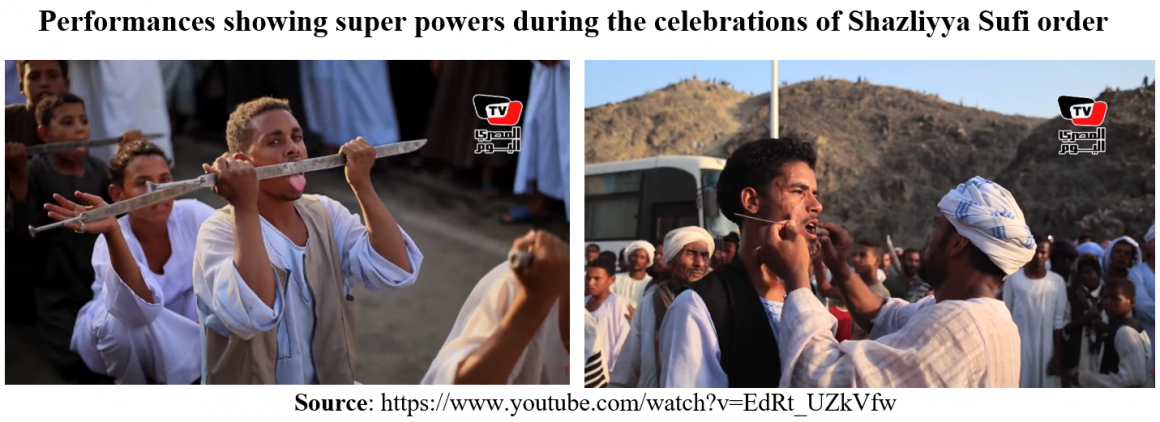Sufism in Egypt
페이지정보
글쓴이 지중해지역원 조회 9,970 조회 날짜 21-09-09 16:14내용
Sufism in Egypt
Mona Farouk M. Ahmed HK assistant professor(IMS, BUFS)
Sufi Islam represents Islamic mysticism with its charming concepts that attracted many people to adopt Islam all over the world throughout history. Sufism exists across Muslim sects and within Sunni and Shiaa although it is not welcomed by many Muslims of those sects especially for those who are described as hardliners. Egypt is one of the Muslim countries where Sufism had deep roots. So, in this article, we will try to explore Sufism in Egypt.
The Egyptian society has various types of Muslims with different aspects and attitudes of their Islamic practice although almost the entirety of Egypt's Muslims is Sunnis, with a small minority of Shia Muslims. Among those Egyptian Muslims, the Sufis live together with other Muslim groups with a different attitude towards Sufism as there are groups welcoming them and other, like Salafi group, opposing their existence while denying many practices and attitudes of Sufis describing it as non-Islamic practices.
Historically, Sufism has been rooted in Egypt as this is evident seeing the Egyptian landscape marked with hundreds of significant Sufi mosques and shrines. Through the following pictures, we can see the shrines for two of the main Sufi places of the thirteenth century.
[1] The founder of Al-Badawiyya Sufi order. [2] The founder of Al-Shazliyya Sufi order.
In Egypt, officially there is a governmental body in charge of the regulation of Sufi activities which is “the Supreme Council of Sufi Orders” since it was founded in 1903. The central aspect for Sufis of Egypt can be seen in their devotion to the Prophet Mohamed and his family, which is reflected in their attachment to do their practice in the shrines related to the prophet’s family in Egypt where there are many shrines of the prophet’s family exist. The following picture shows two examples for those shrines.
Al-Sayeda Zainab Mosque
[3] The daughter of Imam Ali Ibn Abi Talib and the granddaughter of Prophet Mohammad. [4] The son of Imam Ali Ibn Abi Talib and the grandson of Prophet Mohammad.
The Sufi practices include recitation of “zikr”, which means reciting for words praising God, ceremonies for celebrating the birth of Prophet Mohammad, members of the prophet’s family, and other Sufi figures while giving frequent visits to the Sufi shrines and tombs of those religious figures. At the present, about 15% of the Egyptian population can be seen as either Sufi or participants in Sufi practices. As for those Sufis who keep their practices through meetings and groupings in Mosques, they have events of “zikr” that takes different forms using songs or poems and sometimes dancing in special moves including the famous Sufi “whirling” which refer to spinning one's body in repetitive circles while focusing on thinking of God according to the Sufi thought. The following pictures show this whirling dance and how it evolved to emerge as an Egyptian folkloric dance called “Tannura” dance which attracts many tourists enjoying that colorful performance.
There are two main phases of Sufism that can be distinguished in Egypt, the first is the official Sufism sponsored by the Egyptian government through the supreme council of Sufi Orders, and can be seen in the Sufi celebration, Sufi music, Sufi leaders’ participation in Egyptian official TV channels and other mass media channels in Egypt. The second phase can be called popular Sufism, which is mostly hidden and unknown for outsiders. But thanks to modern technology and social media, we are able to see their practices through many videos. The following pictures show examples of strange practices that appear in some of those Sufi events.
At the present, in Egypt, some of the Sufi Muslims can be distinguished through their meetings while practicing their special way of worshiping. But many of them can’t be noticed in society, as they are just ordinary Muslims who practice Sufism of their own and not inside certain meetings or groupings. So, it is difficult to have accurate statistics of the numbers of Sufis in Egypt.
As for the Sufi mosques, there are thousands of Sufi mosques all over Egypt where Sufis do their practice, but non-Sufi Muslims also use those mosques for their prayers as it is not exclusive for Sufis. For the officially registered as Sufis in Egypt, more than 15 million Sufis following 78 different sub-groups called “Tariqa" (meaning methods or orders). Among those Toruq (pl. for Tariqa), al-Rifaaiya is the biggest Tariqa with about two million of its followers, then al-Azmiya, with about a million followers.
The main criticism directed to Sufi orders by other Muslims is because of some Sufi practices seen as violating acts for the Islamic doctrine. Among those practices is The Sufi visits for the shrines of the "Ahl al-Bayt" (the family of the Prophet Muhammad), and "walis" (Sufi saints who are believed to be favored by God), and attending festivals that celebrate their birthdays while performing their main practice for Sufis which is "Zikr" involving music and dance.
There are some evidence of a hostile attitude for Sufis by Muslim hardliners that can be seen clearly in the declarations of Salafi and jihadist groups. They ban their followers from praying in mosques associated with Sufism and consider Sufi practices as a counter to Islamic doctrine. Thus, Sufism is accused by Salafis and other Muslim hardliners of being heretical and superstitious which had its impacts on Sufi leaders’ efforts to emphasize the Sufi consistency with Islamic orthopraxy.
In this context, there are terror acts that targeted Sufis in Egypt. In November 2016, a leading Sufi figure with an age of 98 years old called Sheikh Suleiman Abu Harraz was assassinated after kidnapping him from his house in the town of El-Arish. Also, the IS announced warnings several times to Sufis living in Egypt in general, and those who live in Sinai specifically. They targeted the al-Jaririya Sufi order and its mosque “al-Rawda”, which was attacked by those terrorists in 2017 killing more than 300 people while they were praying the Friday prayers, 90% of those killed were followers of the al-Jaririya Sufi order.
As for the role of Egyptian Sufis in politics, thanks to the 2011 revolution, many Islamic groups founded their political parties including Sufis who started to participate in political life through some parties. Among them, the Tariqa Ar-Rifa’iyyah formed its first political party called “The Voice of Freedom Party”, the Tariqa Al-Azmeyyah founded “The Egyptian Liberation Party”. In November 2011, the Sufi Liberation party joined the liberal, anti-Islamist Egyptian Bloc during the elections to prevent the Islamists of Muslim brotherhood and Salafis from winning the parliamentary elections, which show its attitude opposing to the Muslim Brotherhood and Salafis. Also, Sufi leaders supported the military's overthrow of the former Islamist President and representative of Muslim Brotherhood, Mohammed Morsi, in 2013 responding to the mass protesters. The Sufi leaders supported the Egyptian president Abdul Fattah al-Sisi in the presidential election of 2014.
Sufi leaders had different responses to this political change. Sheikh Abdul Hadi al-Qassabi, the Grand Sheikh of the Sufi Orders, was against the formation of Sufi political parties expecting it to cause societal disputes. Other Sufi leaders saw the necessity of forming Sufi parties as a counteract against other Islamic parties formed by the Muslim Brotherhood and Salafis. Eventually, the Sufi parties were secularized aligning with other secular political coalitions due to the constitutional amendments which banned political parties based on religion.
Conclusion
Sufis comprise a unique Muslim group, though they can be seen in different Muslim sects. Sufis themselves comprise a wide range of subgroups of different teachings and practices in each country, as in Egypt they have 78 orders.
The Sufis of Egypt give a good example for studying their status among other Muslim sects. In Egypt, the relation between Sufis and other Muslims included different attitudes including hostility from the Muslim hardliners condemning Sufi practices, terrorist acts against Sufis led by IS and Jihadists, and cooperative relations with liberal Muslims to confront other Islamic parties. Also, their good relations with the Egyptian government had its impacts resulting in forming good relations with the large group of ordinary Egyptian Muslims who has no special affiliation for their Islam.
References
- Baldick, Julian. Mystical Islam: An Introduction to Sufism. 2d rev. ed. London: I. B. Tauris, 2000.
- Hoffman-Ladd, Valerie J. "Devotion to the Prophet and His Family in Egyptian Sufism." International Journal of Middle East Studies 24, no. 4 (1992): 615-37. Accessed August 7, 2021. http://www.jstor.org/stable/164439.
- Ghada Tantawi, “Who are Egypt's Sufi Muslims?”, BBC Monitoring, 28 Nov. 2017. https://www.bbc.com/news/world-middle-east-42154626
- Jamil M. Abun-Nasr, Muslim Communities of Grace: The Sufi Brotherhoods in Islamic Religious Life (New York: Columbia University Press, 2007).
- Jonathan Brown, Salafis and Sufis in Egypt, The Carnegie papers, Carnegie Endowment for International Peace, Washington D.C., Dec. 2011.
- Interviews with Sufi leaders, “TV. Program: Searching for Sufism (سري للغاية - البحث عن الصوفية)”, Al-Jazeera Channel, 7 Aug. 2008. https://www.youtube.com/watch?v=LepWoCElsUY
- Valerie J. Hoffman, Sufism, Mystics, and Saints in Modern Egypt (Columbia: University of South Carolina Press, 1995).
- https://rpl.hds.harvard.edu/faq/sufism-egypt
- https://www.elwatannews.com/news/details/3539654
댓글목록
댓글이 없습니다




